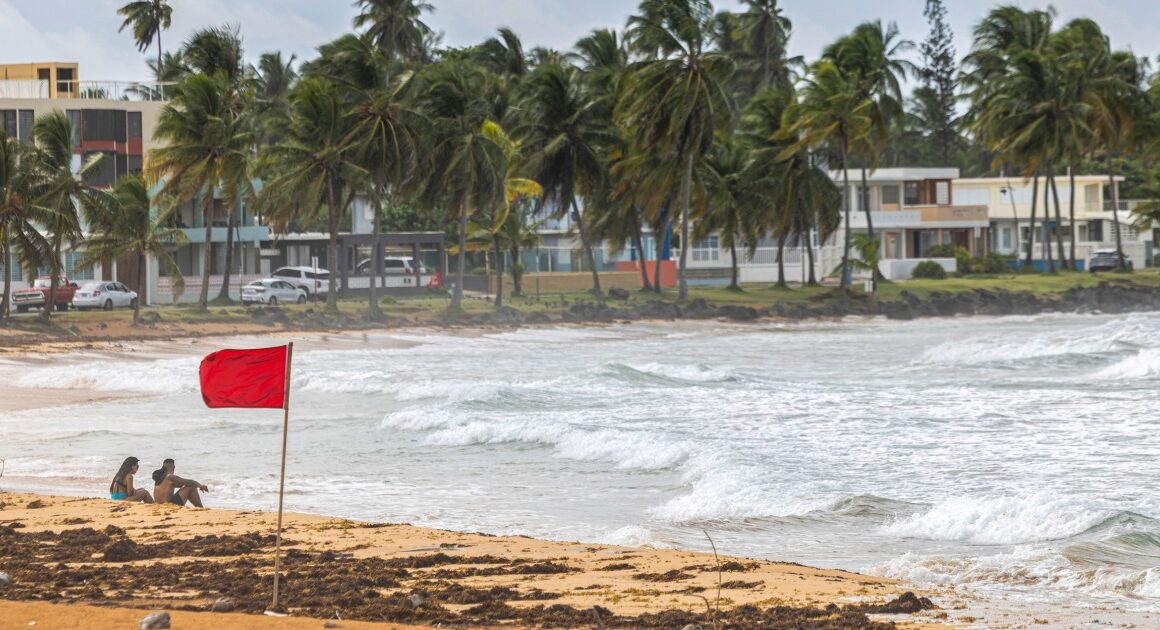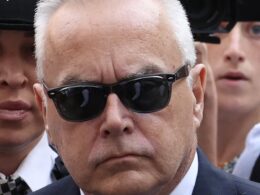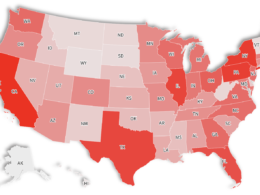More than 700,000 electricity customers in Puerto Rico were without power Wednesday after then-Tropical Storm Ernesto brought heavy rains and high winds that tore down trees on the U.S. territory, officials said.
The storm, which later strengthened to a Category 1 hurricane, did not make direct landfall in Puerto Rico, but it dropped around 10 inches of rain in the region of the town of Barranquitas, the National Weather Service said.
Luma Energy, the private company in charge of power distribution in Puerto Rico, said that restoration would focus on things like hospitals and water treatment infrastructure.
No deaths related to the storm have been reported.
Alarms began ringing in the municipality of Toa Baja on Wednesday morning, warning residents who live in the western part of the town to evacuate their homes as incessant rain from Ernesto overflowed the main river there, exposing more families to dangerous floods.
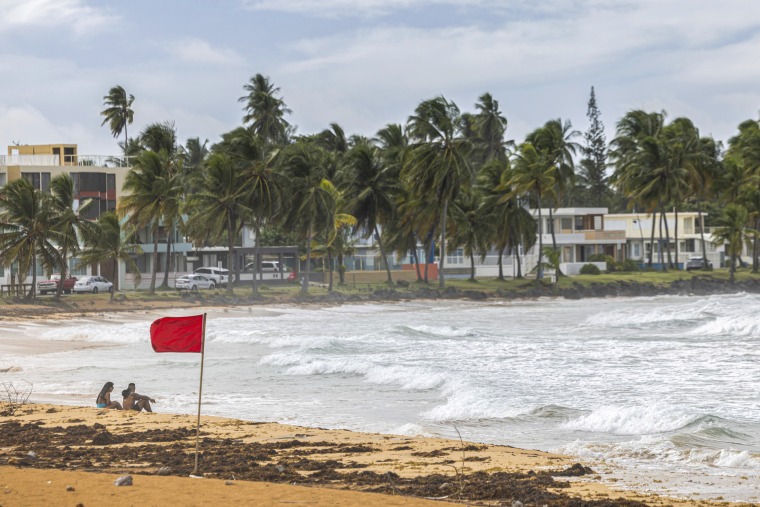
Around 730,000 customers were without power in the aftermath of the storm, which had 70 mph winds as it passed to the north of the island, Pierluisi said.
Government officials had anticipated widespread power outages across the island, as Puerto Rico’s fragile electric grid has not been permanently rebuilt since Hurricane Maria razed it in 2017.
Puerto Rican Secretary of Public Safety Alexis Torres told reporters Wednesday that strong winds have caused debris and large amounts of vegetation to fall, blocking roads and bringing down power lines.
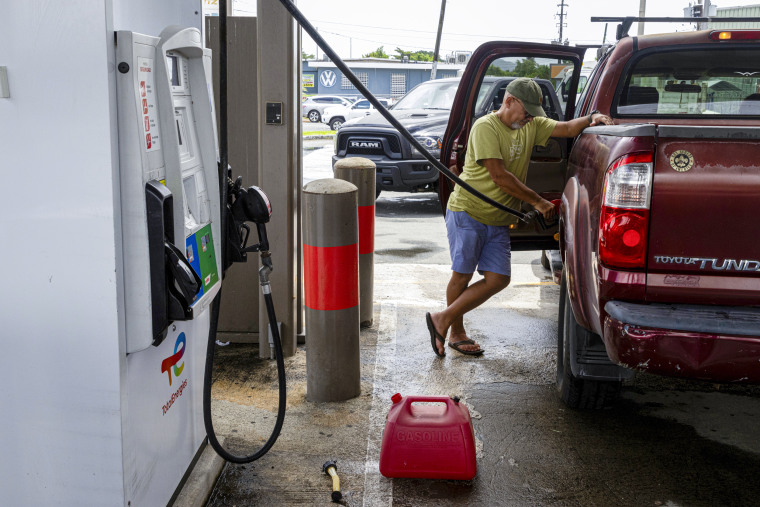
Torres also said heavy rains have caused at least three major rivers to burst out of their banks, threatening the safety of hundreds of families.
“The danger of flooding is not over,” Ernesto Rodríguez, director of the National Meteorological Service in San Juan, said a press conference Wednesday afternoon.
Unsafe conditions
In speaking with Telemundo Puerto Rico, NBC’s sister TV station on the island, the mayors of four towns have said the conditions have made it unsafe for residents to be outside their homes or shelters.
Roads and bridges in the towns of Cidra, Jayuya, Guayama and Toa Baja have been blocked due to floods and debris.
In the coastal town of Luquillo, residents used their own machetes and chainsaws to clear debris and vegetation blocking the only road the community can use to exit in case of an emergency.
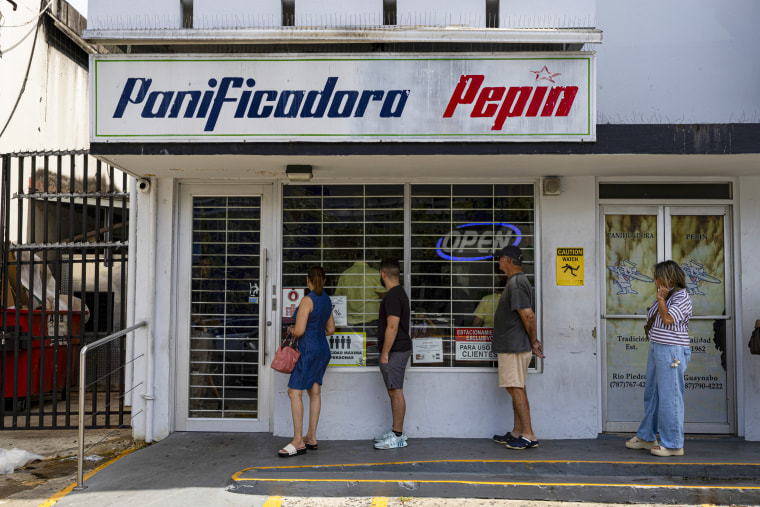
Elizabeth Nieves Jiménez of Toa Baja told Telemundo Puerto Rico she heard the alarm and evacuated her home. She’s one of about a dozen residents who arrived at the town’s shelter voluntarily late Wednesday morning. It had no power and personnel working at the shelter were trying to get a generator going.
At least 375 people were in shelters islandwide as of 9:30 a.m. AST, according to data published in the Puerto Rico Emergency Portal System.
Luma Energy had not deployed its emergency brigades as of late morning Wednesday because conditions remained too unsafe to be outside.
“I understand that they have to ensure their safety, but the people need them,” Ángel David Concepción, mayor of Cidra, told Telemundo Puerto Rico in Spanish, adding that most of his town’s residents have no power or water. Water pumps in most parts of Puerto Rico are powered by electricity.
Pierluisi said in a press conference Wednesday afternoon that Luma Energy’s brigades started to be deployed early Wednesday afternoon.
“What we want is for the number of customers without service to have their power restored,” Pierluisi said in Spanish, adding it’s hard to predict when 100% of the power will be restored.
Luma Energy President Juan Saca said there are 1,500 of their emergency personnel working to restore power.
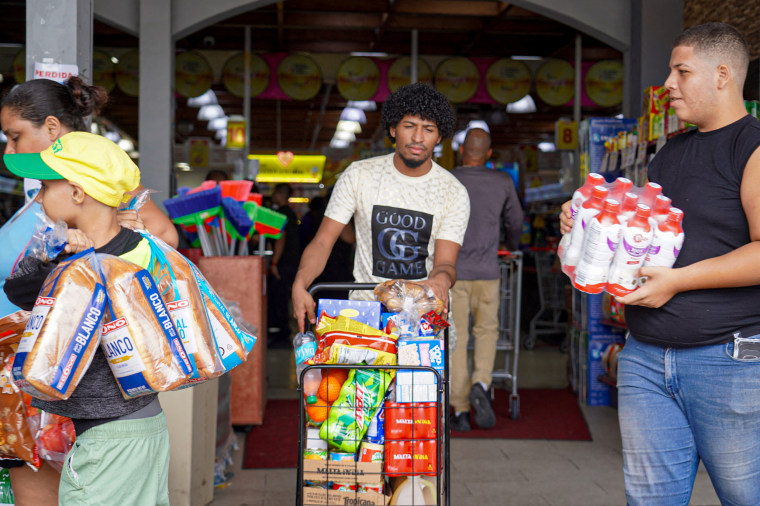
About 120,000 customers didn’t have water as of 11:15 a.m. AST, according to data published in the Puerto Rico Emergency Portal System.
Flash flood warnings were also issued for much of Puerto Rico for the rest of the day.
President Joe Biden approved an emergency declaration for Puerto Rico on Tuesday, authorizing the disbursement of aid from the Federal Emergency Management Agency.
As part of their emergency response, FEMA is ready to provide generators and make available warehouses with emergency supplies during the immediate aftermath of the storm, Manuel Laboy, executive director of Puerto Rico’s Office of Recovery, Reconstruction and Resilience, said in a press conference Wednesday afternoon.
Pierluisi said officials will continue to monitor storm conditions throughout the day to see if schools and government offices will be able to reopen Thursday.
,




